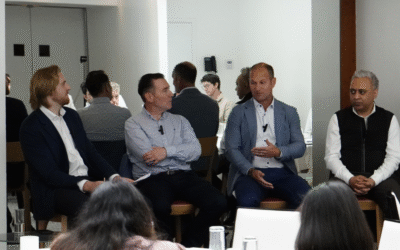Selecting a new fund administrator is a critical decision for GPs. Reversing this decision is challenging and often costly, making it essential to get it right the first time. The frustration and operational disruptions associated with fund administrator(s) failing to meet expectations underpins the importance of a thoughtful selection process.
At Holland Mountain, we assist clients in developing their fund administrator outsourcing strategy. Through our experience of managing dozens of RFP processes for Private capital firms, we have identified five areas CFOs should know about in order to maximize the success of their selection process. This article offers a holistic view on the process, fund administrator landscape and the best practices to adopt before and during the selection process.
By addressing these considerations, firms can ensure they partner with a fund administrator who is best suited to support their operational and strategic goals.
1. Understanding the evolving fund administrator landscape
Each fund administrator has their key differentiators, capabilities, and value drivers. It’s important to have an extensive view of their strong suit and how it best aligns with your requirements. When working with GPs, we typically support their market understanding by focusing on three major trends:
- Evolution of market incumbents: The functional offerings and technology capabilities of fund administrators are continuously evolving and innovative, driven by market trends and demand, regulatory requirements, and client strategies e.g., new fund structures ELTIF & LTAF, tokenization, data & AI use cases etc.
- New niche providers: Every now and then, there will be new, emerging fund administrators entering the market, by establishing their initial presence as niche service provider offering bespoke, specialized services to cater client’s specific nuances. It complements the common servicing gap within the outsourcing model in the market landscape.
- Geographical Expansion: Fund administrators are also constantly expanding into new locations through organic growth, M&A, or partnerships, enabling them to scale along with existing clients while acquiring new clients in regions previously beyond their reach.
The selection of a fund administrator has now become a more diverse process, with GPs landing themselves in a vast array of options. GPs may find themselves familiar with a fraction but not all these choices, considering the development since the most recent market review internally – emphasizing the importance of market knowledge ahead of a selection process.
2. Looking externally: what is considered best practice?
Like any other business strategy, there is no one-size-fits-all model in outsourcing relationship as well, in view of how closely connected it is to every firm’s investment strategy and growth ambition. However, we typically advise for best practice commonly across private capital firms to underpin their relationship with fund administrators.
In an ideal outsourcing model, GPs should aim to be in a position with reduced or no shadow bookkeeping, allowing internal resources to focus on value-adding tasks. We have seen firms leveraging data solutions for fund administrator oversight, either by:
- Evaluating the level of data access provided by the fund administrator on their GP portal, enabling clients to monitor and review data on a timely and transparent manner, while allowing them to extract data for self-reporting purpose
- Implementing internal data platform that feeds data regularly from fund administrator(s), with rules set up to flag for data exceptions while allowing clients to retain full ownership of data
Another best practice we would advise is for GPs to appoint a centralized relationship manager to manage the ongoing relationship with the fund administrator. This person should be responsible to:
- Centralize and monitor internal requests, communication and interactions from relevant teams for any feedback and challenges
- Undertake periodic reviews of the quality of the fund administrator
- Leverage fund administrators’ platform to track feedback on a timely manner, ensuring the reviews sessions with the administrators are data-driven
As part of the decision making in a selection process, we could provide insights on how to achieve the two elements above and support our clients with their peers’ feedback independently to ensure clients have an inside-out view of the administrators they look to appoint.
3. Looking internally: alignment of internal stakeholders
When advising clients on selection, we often emphasize the importance of aligning priorities internally and understanding the actual challenges faced with the previous fund administrators.
- Priorities: Each stakeholder may have a different view or focus within an outsourcing relationship, leading to different expectations of an ideal administrator e.g., having global presence, core competency and quality, investments in technology innovation, and how they would be able to add value as a long-term strategic partner. Aligning the key priorities of each stakeholder group is crucial before initiating the selection process.
- Challenges: The challenges GPs face with fund administrators may typically arise for multiple reasons. Some are driven by internal changes, resulting in outdated SLAs with incumbent administrators due to legacy requirements or process. It may require an independent, objective review of the existing process to identify the root causes and corresponding next steps, to ensure the changes with new administrators are effective.
Having a project sponsor before and during the selection process ensure a responsible party taking ownership of the project, documenting the priorities and preferences of multiple stakeholders, and being able to translate that into a set of requirements for the fund administrator.
4. Meeting investors’ expectations
Fund administration fees are typically charged back to the funds, making it crucial for the administrators’ service quality to be well-reflected on the information that LPs receive. In today’s environment, where investor experience holds increasing importance, there are two critical areas where your fund administrators must excel:
- When a fund administrator manages investor servicing processes, ensure LPs receive comprehensive guidance on using supporting tools. Effective communication and responsiveness to LP queries are essential. Providing clear instructions and resources helps reduce frictions and enhances the overall investor experience.
- Fund administrators that demonstrate flexibility in supporting bespoke investor reporting requirements are often value-adding. This includes accommodating specific types and levels of data, providing reports at the desired frequency and in the preferred format, and utilizing automated reporting tools to ensure efficient information delivery. At bare minimum, the administrator should be capable of providing GPs with the required set of data to support the reporting.
5. Preparation for selection and RFP process
After carefully considering the elements above, private capital managers should incorporate them when preparing their RFP and managing the selection process end-to-end.
GPs will usually go through a process to shortlist their options towards the most ideal administrator. When done well, a comprehensive process enables CFOs to select their best fund administrator, minimizing the risk of missing inputs and ensuring the decision is future-proof.
However, there are also challenges during the selection process that CFOs should be aware of:
- Limited internal resources to run the selection process may distract staff from core and valuable tasks and disrupt BAU operations
- Not having a full picture of the ever-growing fund administrator landscape may restrict options
- Lack of internal alignment and buy-in may delay and muddle the objectives
- Process deficiencies in assessing and evaluating options may undermine the success of selection
- Unaware of best practices on appropriate pricing may result in an unfavorable commercial outcome
How to minimize the risk of missing things and ensure selection success?
Our clients at Holland Mountain usually outsource the process to us to reduce the hassle of running it internally and maximize the success of finding the best fund administrator for their fund.
Holland Mountain’s Fund Admin RFP Process is a bespoke and proven approach for each client. It provides up-front advice to help them overcome challenges when considering a fund administrator selection while providing an end-to-end, managed solution.
Holland Mountain is a trusted partner with extensive experience managing dozens of RFPs for private capital firms representing over $600Bn in AUM. Our broad experience in private capital operations allows us to specify the challenges firms face, both with the fund administrator and internally, ensuring the change does not just stop at changing a service provider but prompts institutional change for operational efficiency and scalability.
We commonly see firm value in our selection services, which are aligned to provide value to investors. Therefore, our service fees can be charged back to the fund.
If you are considering selecting a new fund, contact our private capital fund administration expert team for an introduction call.





